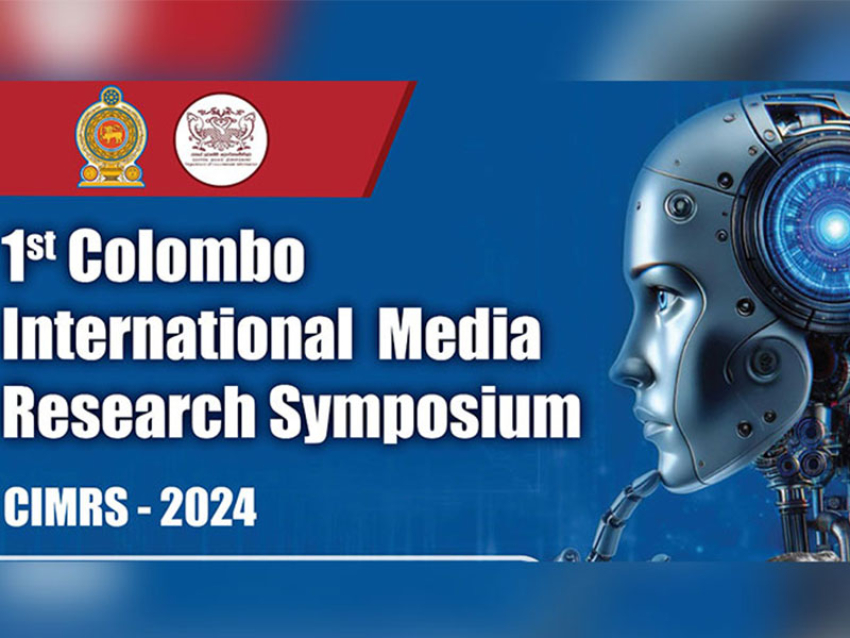We tend to assume that our internal monologue “speaks” in words – but it turns out that, for many of us, it’s much more complicated.
By Kelly Oakes
What were you thinking about a second ago? Or, to cut to the chase, how were you thinking about it? It’s a deceptively tricky question to answer.
Maybe you were internally speaking the words you were reading, seeing a related image in your mind’s eye, or having an emotional response. It’s also possible you had a combination of these thoughts, and others, going on in your head at once… or that you were thinking of something else, in some other way, entirely.
Whatever was happening, it’s likely that your true inner experience – what you were thinking about just before you started trying to figure out what you were thinking about – is now lost to the mists of time.
Interrogating what’s going on inside our own minds doesn’t seem like it should be a difficult task. But by trying to shine a light on those thoughts, we’re disturbing the very thing we want to measure in the first place. Or as American philosopher William James put it in 1890: “The attempt at introspective analysis… is in fact like seizing a spinning top to catch its motion, or trying to turn up the gas quickly enough to see how the darkness looks.”
You might also like:
• The attack that turned a man into a maths genius
• How to live with 100 voices inside your head
• The power of extreme influencers
Psychologist Russell Hurlburt at the University of Nevada, Las Vegas, has spent the last few decades training people to see inside their own minds more clearly in an attempt to learn something about our inner experiences at large. Though many individual studies on inner speech include only a small number of participants, making it hard to know whether their results apply more widely, Hurlburt estimates he’s been able to peek inside the minds of hundreds of people since he began his research. What he’s found suggests that the thoughts running through our heads are a lot more varied than we might suppose.
For one, words don’t seem to feature as heavily in our day-to-day thoughts as many of us think they do. “Most people think that they think in words, but many people are mistaken about that,” he says.
In one small study, for example, 16 college students were given short stories before being randomly sampled to find out what they were thinking during the course of reading. Only a quarter of their sampled thoughts featured words at all, and just 3% involved internal narration.
These results can’t be generalised to everyone, but they do provide food for thought when it comes to our own inner experiences – especially for those of us who haven’t really stopped to consider what is actually running through our minds day in, day out.
“If there's something that you're so intimate with, you never really stopped to think about it – it's not surprising that when you look at it, it's more interesting than you thought,” says Charles Fernyhough, a psychologist at the University of Durham and author of The Voices Within.
But for psychologists like Fernyhough and Hurlburt, researching inner speech is not an easy task. Simply asking people what they’re thinking about won’t necessarily prompt an accurate answer, says Hurlburt. That is partly because we’re not used to paying close attention to our wandering minds, but also because the questions that surveys tend to ask about our thoughts might prompt us to answer in a particular way – something he thinks leads people to report more inner speaking than they truly experience.
Hurlburt’s preferred method of investigation is called Descriptive Experience Sampling, or DES. It makes an effort to remain agnostic about the precise form of people’s thoughts, using open-ended questions designed to eventually lead to precise answers without nudging people to say they were thinking in words or pictures, for example.
In DES, you carry around a device as you go about your normal day-to-day activities. When it beeps, you tune into what was going on in your mind right before the sound. At the end of the day, you debrief with a psychologist who asks questions to get at exactly what was in your head in that moment, and what form it took: words, pictures, an emotion, a physical sensation, or something else.
It takes most people a couple of days to get used to honing in on that exact moment, and not letting other thoughts clutter their descriptions. By repeating the process over the next few days, with the help of the researcher’s questions, the participant gets better at tuning into what they were experiencing at that one moment. “Almost nobody recognises on the first sampling day how careful I want to be about the moment,” Hurlburt says. (One group of people who seem to catch on more quickly are skilled meditators, says Hurlburt, perhaps because they’re already used to tuning in to their own thoughts.)
The idea of an internal dialogue will be familiar to anyone who has ever rehearsed an important conversation
The beeper goes off just a handful of times each day, the idea being that there’s plenty of time between beeps to forget it’s there. This is key, because it prompts you to interrogate your thoughts during a normal day rather than in an artificial lab setting, or at a time when you’re motivated to be introspective. “People have accused me in a derogatory way of talking about a magic beeper,” Hurlburt says. “It’s not magic, but it does allow you to do something which is very difficult to do on your own.”
He compares it to parachuting into an otherwise undisturbed forest: a few small creatures might scurry away, but you can still observe and describe a lot of the forest’s features in something that’s as close to their undisturbed state as you’re ever likely to get.
A 2013 review by Hurlburt and his colleagues points to huge individual differences between people in how much time they spend talking to themselves in their head that have been uncovered through studies using DES. The average frequency of inner speaking across those who took part in the research, at 23%, masks a huge range: from 100% – i.e. for some people, every time they were sampled they had some kind of internal monologue or inner conversation going on – to 0% – i.e. some people were never speaking to themselves internally.
Quiet place
If people aren’t constantly talking to themselves, what are they doing?
In his years of studying the inner workings of people’s minds, Hurlburt has come up with five categories of inner experiences: inner speaking, which comes in a variety of forms; inner seeing, which could feature images of things you’ve seen in real life or imaginary visuals; feelings, such as anger or happiness; sensory awareness, like being aware of the scratchiness of the carpet under your feet; and unsymbolised thinking, a trickier concept to get your head around, but essentially a thought that doesn’t manifest as words or images, but is undoubtedly present in your mind.
But those categories leave room for variation, too. Take inner speaking, which can come in the form of a single word, a sentence, some kind of monologue, or even a conversation.
The idea of an internal dialogue – rather than a monologue – will be familiar to anyone who’s ever rehearsed an important conversation, or rehashed an argument, in their mind. But the person we talk to inside our head is not always a stand in for someone else – often, that other voice is another aspect of ourselves.
In a 2015 study, Malgorzata Puchalska-Wasyl, a psychologist at the John Paul II Catholic University of Lublin, Poland, asked students to describe the different kinds of inner voices they conversed with and came up with a list of four common internal interlocutors: the faithful friend; the ambivalent parent; the proud rival; and the helpless child. Each voice might pop up in different situations – an ambivalent parent-type might offer caring criticism, but a proud rival-type is more likely to be focussed on success rather than offering support. We might adopt these different roles to help ourselves get through situations like a tough test or sports game.
Hurlburt, though, is less concerned with why people are experiencing particular kinds of inner experience than what exactly they are thinking. He began developing DES in the 1970s, and in that time estimates that he has trained hundreds of people in the art of reading their own minds – from Vietnam War veterans with PTSD, to women with bulimia, alongside plenty of people with more typical day-to-day experiences.
Still, not everyone is convinced the method works. In a 2007 book co-authored with Hurlburt, Describing Inner Experience? Proponent Meets Skeptic, philosopher Eric Schwitzgebel at the University of California, Riverside, argues that “people are prone to considerable introspective error even under the best of conditions”. Commenting on that book, philosopher Maja Spener at the University of Birmingham argued that whether or not introspection can provide useful information about the mind depends on the specific question you want to answer – but the aims of DES, she says, are not always clear. “For example, we should not, and nobody presumably would, expect subject’s introspective reports about painful experiences to be accurate with respect to questions about the evolutionary origin of pain,” she wrote. “On the other hand... we would expect such reports to be accurate with respect to the presence of a painful experience.”
Recently, Hurlburt has begun to combine DES with scanning people in an fMRI. He ran a study that involved training five people in DES, and then recording what went on in their brains while they underwent an fMRI scan. Though the number of participants was small, the results, published in 2018, suggest that what people say they are thinking about and what’s going on in their brains does match up.
But Fernyhough, who collaborated on the work, cautions that he and his colleagues are not trying to make generalisations about what everyone's mind is like on the basis of these five people: “We're trying to say that for these particular people, there's a really interesting correlation between what's going on in their brains and what they say is going on.”
The study also showed that, at least for the participants, asking people to speak internally makes different brain regions light up than when the impulse for inner speaking comes from them spontaneously. If it’s a finding that holds more generally – a follow up study with more participants is in the works – it could be bad news for psychologists trying to study true inner speech by asking people to lie in a scanner and silently “say” specific words or phrases.
“With the inner speech that arises naturally... I see it as part of a conversation, that kind of ongoing conversation that in the long run is happening with other people,” says Fernyhough. “It's part of a social dialogue that becomes internalised, so it has a different sort of dynamic, it has a different flow, it happens for different reasons.”
“It's very different reasons to some experimenter saying to lie down in that box and think particular thoughts,” he says. “You're not thinking those thoughts, because you need to think those thoughts, or because you want to think those thoughts, or because they arise to you naturally – you're doing it because you've been told to.”
In the real world, our motivations for inner speech are many and varied, in the same way that we use external language for lots of different reasons.
Famira Racy, co-ordinator of the Inner Speech Lab at Mount Royal University, Canada, and her colleagues recently used a method called thought listing – which, unsurprisingly, involves getting participants to list their thoughts at certain times – to take a broader look at why and when people use inner speech, as well as what they say to themselves.
They found that the students in the study were talking to themselves about everything from school to their emotions, other people, and themselves, while they were doing everyday tasks like walking and getting in and out of bed. Though it has the same limitations as much research on inner speech – namely, you can’t always trust people to know what or how they were really thinking – the results appear consistent with previous work.
“I can’t say for sure if it’s any more important [than other kinds of inner experience], but there’s been enough research done to show that inner speech plays an important role in self-regulation behaviour, problem solving, critical thinking and reasoning and future thinking,” Racy says.
Inner speech is your flashlight in the dark room that is your mind – Famira Racy
There’s growing evidence that inner speech is important for self-reflection, too. After neuroanatomist Jill Bolte Taylor recovered from a stroke she suffered aged 37, she wrote in My Stroke of Insight about what it was like to experience a “silent mind” without inner speech for several weeks: “What a daunting task it was to simply sit there in the centre of my silent mind... trying to remember, Who am I? What am I doing?”
Because looking in depth at people’s inner experience is tricky and time consuming, the kind of large studies that could tell us why there are individual differences in how and how much we use inner speech haven’t yet been done, Hurlburt says. There are plenty of other questions left to answer, too, like whether the use of inner speech varies across cultures, or whether different kinds of inner experiences correlate with different personality types.
But even though current research can’t yet shine a light on those bigger truths about the inner workings of our minds, learning how to tune into your thoughts could help you on an individual level.
“It gives you a way to communicate with yourself using a meaningful structure,” says Racy. Or as one of her colleagues sometimes puts it: “Inner speech is your flashlight in the dark room that is your mind.”




















